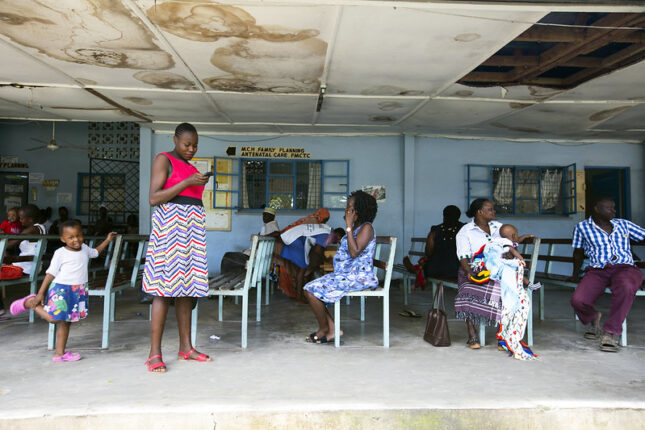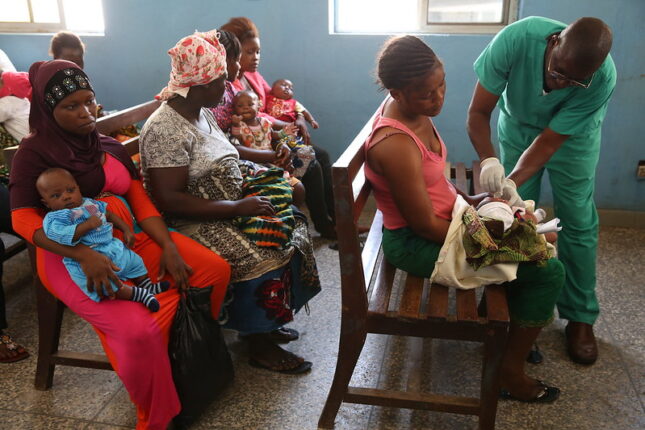-
Is Health Financing Gender Biased?

We take for granted the way health programs are financed—and often forget that there are biases in financing functions that undermine equitable access to health care.
For instance, through gender advances, women now decide on contraceptive use and childbearing. Yet the health financing related to those services tends to emphasize improving efficiency and optimizing resources, without necessarily aligning its objectives with gender equity or inclusivity.
Health financing comprises three functions: resource mobilization, pooling, and purchasing. Gender-based barriers exist in each function. Examining each of these areas highlights that health financing is not a seamless process. It needs to challenge bias and inequities across those functions by asking thought-provoking questions.
Mobilizing Resources
Health systems generate and collect revenues to pay for services through resource mobilization. Sources of funding include taxes, health insurance schemes, and user fees—and each of them offer advantages and challenges to gender equitable access.
While taxes are a prime source of government revenue for the health system, for example, a fixed-percentage tax differentially impacts the poor and women—groups with lower income levels and less disposable income than men. User fees are another common source of health sector funding, but they are also inequitable because women generally have less control over household resources but have a greater demand for services.
In order to address gender inequities in resource mobilization, these questions can help us think about how to generate needed funds differently:
- What are the patterns of public and private funding? How do those patterns impact women and girls, men and boys, and gender diverse individuals differently? Are the financial contributions through which healthcare is funded equitable and fair?
- Is public financing of healthcare services mobilized from progressive taxes? Can more progressive taxes be levied to finance health? How can the burden of regressive taxes on women and poorer individuals be reduced?

The Power of Pooling
Health systems share the financial risk of paying for healthcare across a larger set of people by pooling contributions. Pooling helps promote equity, as those with greater ability to pay, while those with less risk of illness subsidize poorer and higher-risk individuals. Health insurance schemes that pool contributions from enrolled individuals are a common mechanism to accomplish this.
When access to health insurance is tied to a person’s employment status, however, discontinuity in coverage and benefits occurs when employment status changes. Employment-based schemes also tend to be inequitable to women in a deeper sense, because they work less often in the formal sector, and are more likely to experience fragmented coverage as they enter and exit the formal labor sector for personal reasons.
Similarly, as schemes that include groups based on specific criteria, such as poverty status or pregnancy, attempt to promote equity, they also can result in inequitable access to health care as individuals transition in and out of qualifying conditions.
Making risk pooling more equitable requires identifying an appropriate mix of higher- and lower-risk individuals, as well as and those with the capacity to pay and those who do not. Some countries are moving toward compulsory public schemes that combine contributions from formal-sector and tax revenues to subsidize contributions for the economically vulnerable. Yet challenges remain when implementing this type of resource pooling and mechanism, including inadequate resourcing of services directed toward women and failure to address underlying determinants of heath service use,
Among the questions to consider to promote gender equality in resource pooling include:
- Who is making decisions and who is influencing pooling decisions? Are people of all genders adequately represented? How can populations under-represented in formal sector and political dialogue be explicitly included?
- How can programs be structured to ensure that people who transition between entitlement categories (e.g., employment, pregnancy status) continue to have access to healthcare over the life course?
- How can pooling address gender biases, such as by valuing unpaid care work and reproductive health-related responsibilities in the same way as paid work?
- Is there a way to move away from voluntary or contributory schemes (such as employment-based insurance) towards national public schemes, while ensuring that the services included reflect the health needs of women and children?
Purchasing as the Gateway to Pay Providers
Purchasing health services is the process through which resources are transferred to health care providers. Through purchasing, pooled funds flow to providers through various payment mechanisms. Its common goals include balancing cost-containment with improving population health outcomes, reducing disparities in those outcomes, and improving the quality of care.
Yet biases in purchasing may result in gender disparities. For example, an insurance benefits package may not fully cover contraceptive services, compelling women to purchase contraceptives out of pocket. Insurance benefits also may not cover gender affirming care, denying transgender individuals access to critical health care.
Payment mechanisms also incentivize providers to offer some services over others in many cases, without respect to the needs and wants of the client. These incentives can be further exacerbated when provider behaviors discourage women—especially young women—from using reproductive health care services they may need. The increasing use of demand-side financing interventions such as vouchers or cash transfer programs may improve access to healthcare services for specific population needs, but they do not necessarily address the quality issues that affect the demand for services.
Thus, the following points should be considered for promoting gender equity when identifying purchasing mechanisms:
- How can benefits packages be defined to reflect the needs and preferences of different genders equally?
- What facilitators need to be in place to ensure that different genders can access benefits without stigma and discrimination?
- How can payment mechanisms be designed to incentivize the right staffing mix and services to provide equitable, quality care to people of all genders?
The number of questions that emerge from any survey of present practices suggests that it is time to address the inherent gender bias in health financing. Gender transformative health financing cannot remain elusive. Improvements in health outcomes depend on addressing gender biases that reduce access to and use of health services. By focusing on health financing functions, decisionmakers can think systematically about gender-based barriers and how to remove them—making gender transformative health financing possible.
Jay Gribble is a senior director in Palladium’s Global Health Practice. He serves as Deputy Director for Family Planning and Reproductive Health on the USAID-supported PROPEL Health project.
Rebecca Ross was senior technical advisor for health financing at Palladium when this work was done.
Beth Rottach is a director at Palladium’s Global Health Practice.
Photo Credit: Children and women wait outside consultation rooms at the Port Reitz Hospital in Mombasa, Kenya, December 2019. Courtesy of Arete / Albert Gonzalez Farran for HP+; Saidu Kay Sesay (far right) vaccinating children at the Princess Christian maternity Hospital on March 10, 2015 in Freetown Sierra Leone. Courtesy of Dominic Chavez/World Bank.
 A Publication of the Stimson Center.
A Publication of the Stimson Center.







